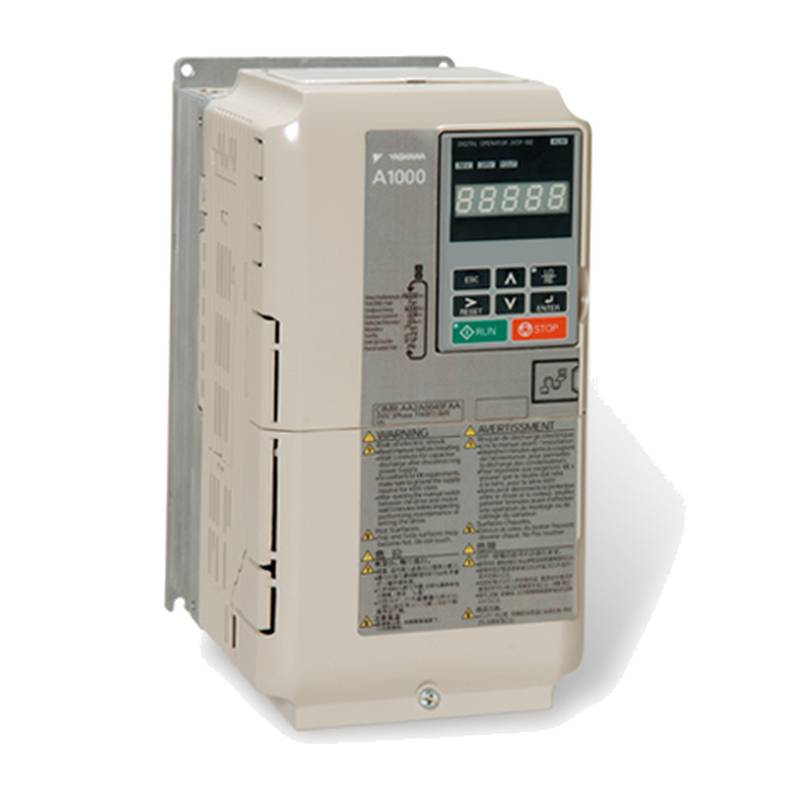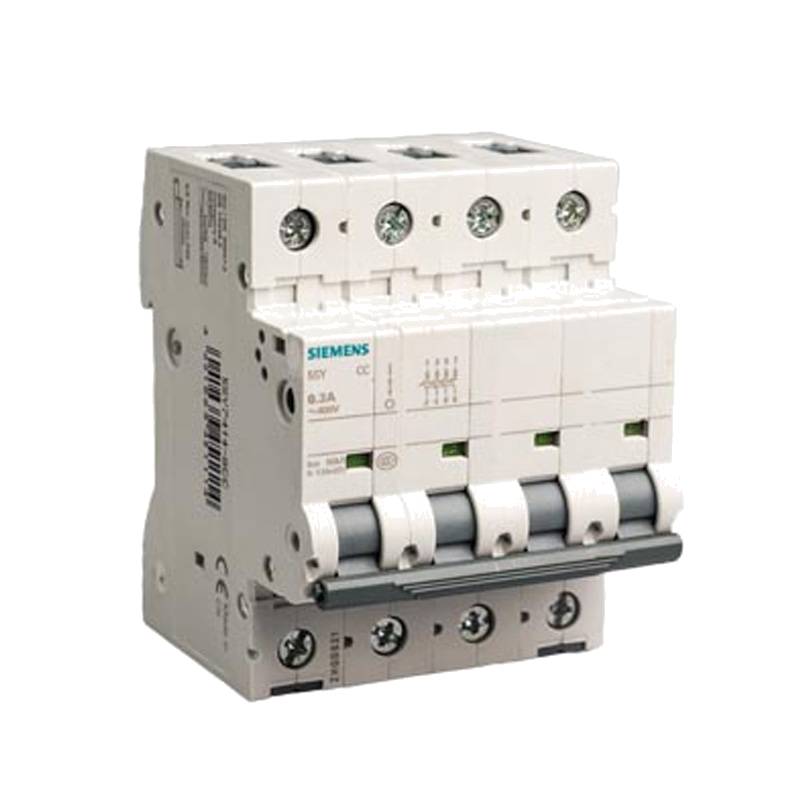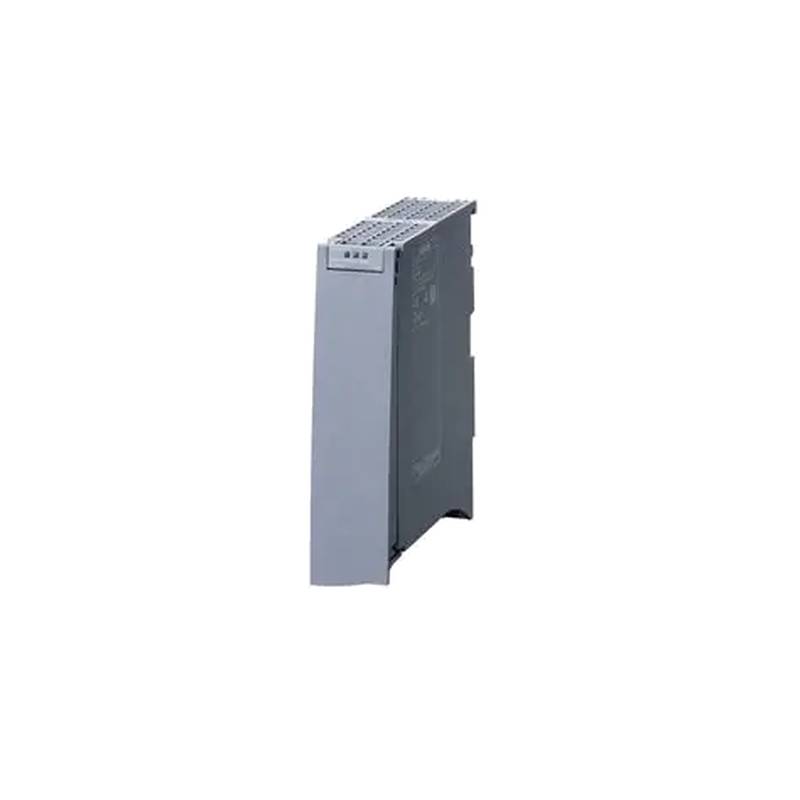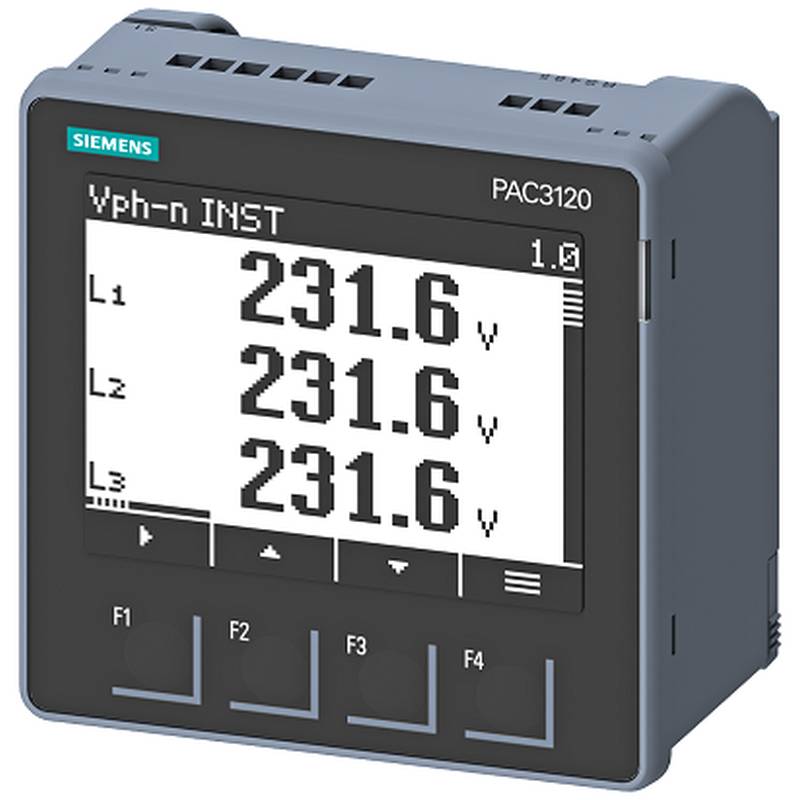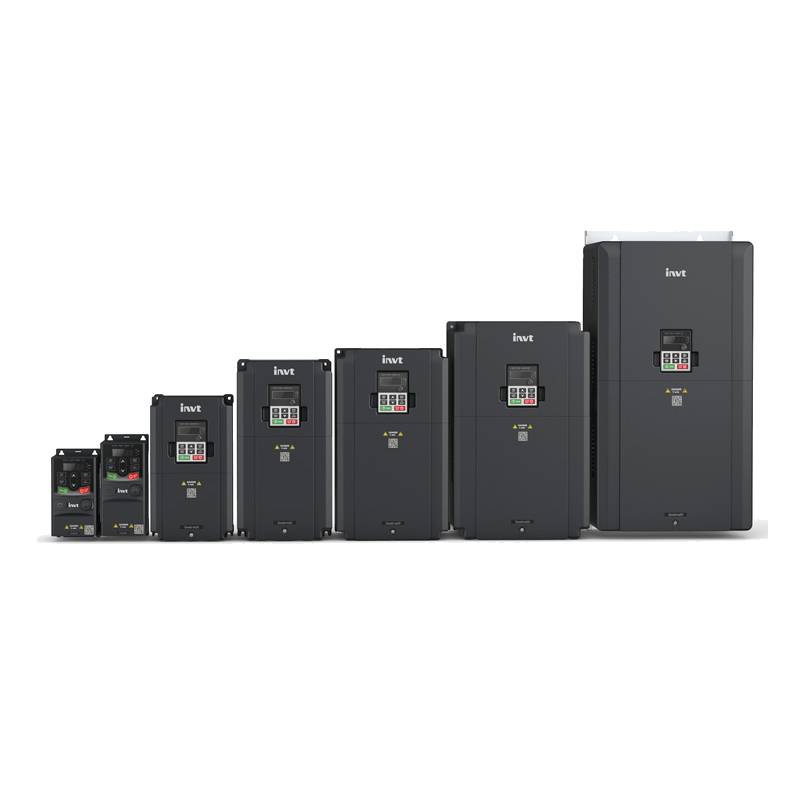
The YASKAWA AB4A0007FBA A1000 Standard Inverter is a highly efficient and reliable solution engineered for precise pump control in demanding industrial environments. This 2.2kW (3HP) inverter, with a rated current of 5.4A, offers exceptional performance, energy savings, and enhanced system longevity, making it a superior choice for applications requiring robust motor management. Its advanced control algorithms and user-friendly interface simplify setup and operation, while its compact design facilitates easy integration into existing systems. The A1000 series is renowned for its durability and ability to optimize pump performance across a wide range of conditions, ensuring maximum operational efficiency and reduced maintenance costs.
Product Specifications
| Feature | Specification |
| :------------------- | :------------------------------------------ |
| Model Number | YASKAWA AB4A0007FBA |
| Series | A1000 Standard Inverter |
| Power Rating | 2.2 kW (3 HP) |
| Rated Current | 5.4 A |
| Input Voltage | 3-Phase 200-240V AC (specific to model) |
| Output Voltage | 3-Phase 200-240V AC (specific to model) |
| Frequency Range | 0.01 to 400 Hz |
| Control Method | V/f, Advanced V/f, Closed-loop Vector |
| Protection Features | Overload, Overvoltage, Undervoltage, etc. |
| Ambient Temperature | -10°C to 50°C (derating may apply) |
| Mounting | Wall or Panel Mount |
| Communication Options| Modbus RTU, DeviceNet, EtherNet/IP (optional) |
Core Features & Market Positioning
The YASKAWA AB4A0007FBA A1000 inverter distinguishes itself through its sophisticated closed-loop vector control, enabling precise speed and torque regulation essential for dynamic pump applications. This advanced control technology minimizes slip, ensuring accurate flow rates and maintaining optimal system pressure even under fluctuating loads. Its integrated "Auto-Tuning" feature simplifies setup by automatically identifying motor parameters, significantly reducing commissioning time and complexity. Furthermore, the A1000's robust build quality and extensive protection functions, including advanced thermal management, position it as a highly reliable component for continuous operation in harsh industrial settings, offering a superior total cost of ownership compared to less advanced VFD solutions.
Key Application Scenarios
This YASKAWA inverter is ideally suited for a multitude of pump control applications, including water supply and wastewater management systems where precise flow and pressure control are paramount. It excels in HVAC systems for managing chilled and hot water circulation, contributing to significant energy savings through optimized motor speed. In chemical processing and manufacturing, its ability to handle corrosive environments and maintain precise dosing accuracy makes it an invaluable asset. The AB4A0007FBA A1000 is also a robust choice for irrigation systems, ensuring efficient water distribution, and in general industrial processes requiring variable speed pumping for mixers, fans, and conveyors.
Practical System Integration Guidance
Integrating the YASKAWA AB4A0007FBA A1000 involves careful consideration of power, control, and communication wiring. Ensure the main power supply is correctly connected to the L1, L2, L3 terminals, adhering to local electrical codes and safety standards. For motor connections, use terminals T1, T2, T3. Control wiring for digital and analog inputs/outputs should be routed separately from power cables to prevent interference. Parameter configuration is typically performed via the front panel keypad or through YASKAWA's utility software. Initial setup often involves motor auto-tuning (parameters d1-01 to d1-04) to optimize performance for the connected motor. Always refer to the official YASKAWA A1000 manual for detailed wiring diagrams and programming instructions specific to your application.
Operation and Risk Mitigation
Operating the YASKAWA AB4A0007FBA inverter requires adherence to established safety protocols. Before powering on, verify all wiring connections and ensure the inverter's heatsink is adequately ventilated to prevent overheating. Common operational risks include parameter misconfiguration, leading to unexpected motor behavior or system instability. The A1000 series features comprehensive fault codes to assist in diagnostics. For instance, an "OL" (Overload) fault indicates the motor is drawing excessive current, necessitating a review of the load or motor size. An "E.oP" (External Device Fault) suggests an issue with a connected external component or control signal. Always consult the A1000's fault code table in the user manual for precise troubleshooting steps and ensure that lockout functions are configured to prevent unauthorized adjustments.
Scalability & Long-Term Value
The YASKAWA AB4A0007FBA A1000 inverter offers considerable scalability, allowing for seamless integration into evolving industrial automation architectures. It supports various communication protocols, including optional network cards for Modbus RTU, DeviceNet, and EtherNet/IP, enabling easy connection to SCADA systems and PLCs for remote monitoring and control. This facilitates its incorporation into IIoT platforms and smart manufacturing environments, providing valuable data for predictive maintenance and process optimization. The inverter's modular design and YASKAWA's commitment to backward compatibility ensure that systems built around the A1000 can be upgraded or expanded with minimal disruption, safeguarding long-term investment and operational continuity.
*
Frequently Asked Questions
What are the main advantages of the YASKAWA A1000 inverter for pump control?
The A1000 offers superior energy efficiency through precise speed control. Its advanced vector control ensures optimal torque and accurate flow rates. This inverter also boasts robust overload protection and long operational life.
The integrated auto-tuning simplifies setup and commissioning significantly. It reduces the need for manual parameter adjustments. This leads to faster system deployment.
It provides enhanced system reliability with numerous built-in protection functions. This minimizes downtime and maintenance requirements. It’s a cost-effective solution over its lifespan.
How do I wire the YASKAWA AB4A0007FBA for a 3-phase pump?
Connect the incoming 3-phase power supply to terminals L1, L2, and L3. Ensure proper grounding for safety. Check the input voltage rating.
Connect the motor's 3 leads to terminals T1, T2, and T3 of the inverter. Maintain correct phase sequence for proper motor rotation. Consult motor nameplate for details.
Route control wiring separately from power cables. Use appropriate shielded cables for analog inputs if applicable. Follow schematic in the manual precisely.
What are common fault codes for the YASKAWA A1000 and how to address them?
The "OL" fault signifies an overload condition. This means the motor is drawing too much current. Investigate the pump load or motor sizing.
An "E.oP" fault indicates an external device fault. This points to an issue with a connected sensor or control signal. Check external wiring and devices.
"UV" (Under Voltage) or "OV" (Over Voltage) faults relate to the input power supply. Verify the stability and range of the incoming voltage.
Can the YASKAWA A1000 inverter be used with single-phase motors?
Typically, this model is designed for 3-phase motors. Using it with a single-phase motor is not standard. It may require a phase converter.
Connecting a single-phase motor directly can damage the inverter. It can also lead to poor motor performance. Always verify motor type compatibility.
Always consult the YASKAWA documentation for specific motor compatibility. Ensure the application matches the inverter's intended use.
What is the process for motor auto-tuning on the A1000?
Auto-tuning calibrates the inverter to the specific motor. It optimizes performance and efficiency. Access tuning parameters via the keypad.
Initiate the auto-tuning process by setting specific parameters. These typically include motor pole count and rated RPM. Follow the on-screen prompts carefully.
Once complete, the inverter stores the motor's electrical characteristics. This ensures precise speed and torque control. Re-tune if the motor is changed.
How can I integrate the YASKAWA AB4A0007FBA with a PLC?
Use optional communication cards like DeviceNet or EtherNet/IP. These cards enable direct network integration with PLCs. Configure network addresses.
Connect the inverter's communication port to the PLC's network. Use YASKAWA's communication parameters for setup. Define data registers for control.
Alternatively, use digital and analog I/O for basic control. Wire PLC outputs to inverter inputs and vice-versa. Program PLC logic accordingly.
What is the maximum ambient temperature for operating the A1000 inverter?
The standard operating ambient temperature is up to 50°C. Exceeding this may require derating the inverter's capacity. Ensure adequate ventilation.
Derating means reducing the continuous output current. This prevents overheating and extends the inverter's lifespan. Consult the manual for derating curves.
Proper ventilation is crucial in high-temperature environments. Consider auxiliary cooling fans if necessary. Monitor inverter temperature.
Does the YASKAWA A1000 support Modbus RTU communication?
Yes, the A1000 series typically supports Modbus RTU. This is often standard or available via an option card. It enables serial communication.
Connect the inverter's serial port (often RS-485) to the master device. Configure communication parameters like baud rate and parity. Set the inverter's address.
Modbus RTU allows for remote monitoring and control of the inverter. You can read status, faults, and write commands. It's a widely used industrial protocol.
What is the power factor correction capability of the A1000 inverter?
The A1000 inherently improves power factor. It draws current more efficiently from the line. This reduces reactive power demand.
It achieves a near-unity power factor at higher loads. This helps avoid utility penalties for low power factor. It contributes to energy savings.
While it improves power factor, external PFC units might be needed. This depends on specific grid requirements and harmonics. Always check total system needs.
How can I protect the YASKAWA AB4A0007FBA from electrical noise and interference?
Use shielded cables for all motor and control wiring. Properly ground the shield at one end, typically at the inverter. This minimizes noise pickup.
Install line reactors or harmonic filters on the input or output. These devices suppress electrical noise and voltage spikes. They also reduce harmonic distortion.
Ensure proper grounding of the inverter and motor frame. Maintain adequate separation between power and control wiring. Follow best practices for VFD installation.














